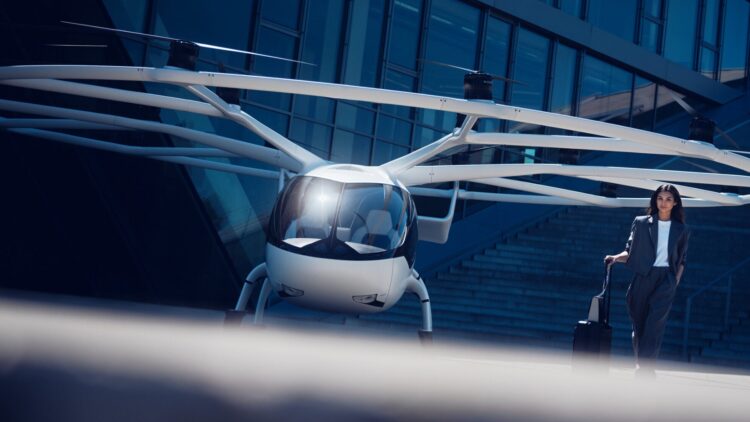Just when we thought the world of air transport had been refined as much as possible, they come up with new ideas. Although we believe that the sky is completely open and that planes can fly in any direction they want, there is a new highway project that does not require any asphalt. We are talking about air highways, Skylanes, or air lanes dedicated exclusively to flying in one direction or another. With so much air traffic today, it is best to bring a little order before everything gets out of hand.
The transportation departments of North Carolina and Georgia have formally announced their collaboration to create one of these air highways. It would be the country’s first advanced interstate air mobility corridor. Although it is currently in the study and development phase, it looks like we will be able to benefit from this highway and its transportation efficiency in a few years.
The Charlotte-Atlanta Corridor
The two states’ aviation divisions are seeking to design an air corridor connecting two of the largest and busiest metropolitan areas in the southeastern United States. This project would be a real-world test bed that could be replicated in other parts of the country. For now, unmanned systems and large controls on the first electric vertical takeoff and landing (eVTOL) vehicles would be used.
This futuristic highway would not only ensure airspace safety, but also solve the problem of ground congestion. It should not be forgotten that it would boost the regional economy by accelerating the movement of both people and goods. The route would cover a distance of 200 nautical miles (almost 370 km). Although this distance poses a range challenge for many first-generation eVTOLs, longer-range cargo models are being developed.
How does an aerial highway work?
Aerial highways are three-dimensional virtual constructions in airspace. Obviously, they are not physically delimited—it would be impossible to build any kind of architecture thousands of feet above the ground as if it were a highway for cars. They also operate far from traditional commercial aviation routes.
These aerial highways are created to manage high-density traffic that cannot rely on traditional methods. To control it, a new generation air traffic control system known as UTM (Uncrewed Aircraft System Traffic Management) is required. Unlike traditional methods, which require human air traffic controllers, this UTM system is fully digital and automated.
Obviously, they also need airports, called vertiports. These vertiports are aircraft takeoff and landing points, also called TLOF (Touchdown and Lift-Off Area). They are very similar to heliports and are adapted to offer fast electric recharging, as well as allowing seamless integration with ground transportation.
The new eVTOL aircraft
The eVTOL (Electric Vertical Takeoff and Landing) aircraft will be the star vehicle of these air highways. These are electrically-powered aircrafts. To do this, they use multiple rotors (between eight and 18 units). Their most distinctive feature is that they are capable of taking off and landing vertically, like a helicopter. This allows them to operate without the need for long runways like traditional passenger airports.
In addition, they are considerably quieter than conventional helicopters, which is a great advantage for installing these new vertiports near human communities without disturbing or detracting from the quality of life of neighborhood residents.
There are already some multi-rotor aircraft being used for short urban flights. Their simple design makes them effective for getting from the city to the airport in a matter of minutes. The company VoloCity—and their Volocopter, depicted in the thumbnail—already offers this type of service in UAM.
Believe it or not, Dubai is the undisputed leader in the implementation of this type of air mobility. They plan to create a complete network of urban air taxis by 2026. For now, their main routes will connect the International Airport (DXB), Downtown, Dubai Marina, and Palm Jumeirah.
Meanwhile, back in the West, an international corridor has also been proposed that would link Syracuse, New York, with Quebec, Canada, for cargo transport.

